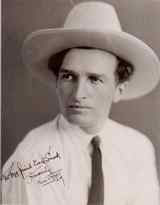 Here are some of the things I liked about Esther Forbes' 1944 Newbery winner, Johnny Tremain. The historical characters - stocky, practical Paul Revere, proud businessman John Hancock, and Samuel Adams with his shabby house - are all portrayed in an interesting and not overly simplistic way. They're real, complicated characters, not icons of the Revolution.
Here are some of the things I liked about Esther Forbes' 1944 Newbery winner, Johnny Tremain. The historical characters - stocky, practical Paul Revere, proud businessman John Hancock, and Samuel Adams with his shabby house - are all portrayed in an interesting and not overly simplistic way. They're real, complicated characters, not icons of the Revolution.The colonial setting is also very well drawn, and Forbes has included many details about life in the late 18th century - especially food (syllabub! salt alewives, apple, mince, pumpkin and plum tarts, squabs, "a wreath of jellied eels" and "tipsy parson - white bread tied into little knots, buttered and baked", p. 58-59), and the apprentices' work, and a bit about the Puritans' religious strictures, and the general feel of the busy wharves of Boston. In addition to the silversmiths (Johnny starts out as an apprentice silversmith), there are also clockmakers, wool weavers, barbers, butchers, tailors, bookbinders, instrument-makers, printers, delivery boys (or "horse boys", which Johnny becomes, with some wonderful descriptions of his horse, Goblin), as well as chimney sweeps, oystermen, and knife-grinders. Boston and its hinterland of smaller towns and farms really is shown in a historically accurate (as far as I can tell) and colorful manner.
I did not like the cover. Peter D. Sieruta blogged about the different Johnny Tremain covers (some with Johnny in a tricornered hat and some without), but I have to say that this is one of the few Newbery winners where I think that recent covers are actually an improvement over the original. Seriously, Johnny's pale, ghostly face and the lines of redcoats and huddled houses made it harder for me to pick the book up and start reading it than it should have been. I did like the black & white illustrations every few chapters, though they weren't especially memorable.
Johnny himself is an interesting but often not very likable character, starting out with his thoughtless name-calling ("pig-of-a-louse"!), and his bullying of the "whitish, flaccid, parasitic Dove" (p. 3). He doesn't treat the women in his life very well, either, taking them for granted, pulling away from Cilla when she needs him, and then only getting interested in her when it appears she might be involved with his friend Rab.
Johnny does carry the story, though, and this is true partially because of his flaws. He does mature, and I liked how he thought better of his dead mother and the sacrifices she made as the story developed. His understanding of his own personal shortcomings and his increasing knowledge of politics and subsequent patriotism are also heartening to read about.
Paragraphs like the following infodump, however, reminded me a bit too much of the history I didn't like reading in high school (it wasn't until I got to college that I realized that I really loved history, and that it is full of the most bizarre and amazing stories that you couldn't make up):
The tension in Boston grew. Everyone knew that with the coming of spring General Gage would leave the safety of Boston, strike out into the country as commanded by his King, and this time in considerable force. He would never dare send out a mere handful. He knew how well the provincials were arming, preparing to welcome him. King George was in a fury over the dilatory, cautious behavior of his general. Rebellion had not been put down as he had ordered and every day it was growing stronger.....Word came to Boston that three generals, more ferocious than mild General Gage, were already on the way over to take command - Generals Howe, Clinton, and Burgoyne. Doubtless, perhaps against his better judgment, Gage would make his big sortie before the Cerebus arrived with the three new generals (p. 197-198).Luckily, paragraphs like this didn't constitute the majority of Johnny Tremain's story, but they were frequent enough to make me sigh and wish for a little more showing and less telling. This is probably why a lot of kids today also dismiss Johnny Tremain as boring and old-fashioned. Which is a shame, since the story is really rather compelling, and I can think of loads of good discussion questions for kids (or adults!). You could look at how Johnny deals with his disability, what it means "that a man can stand up", and how different things were for 14-16 year old boys in the late 18th century, for instance. And why did Johnny became a Whig, and whatever happened to Dove? And Cilla and Isannah?

























